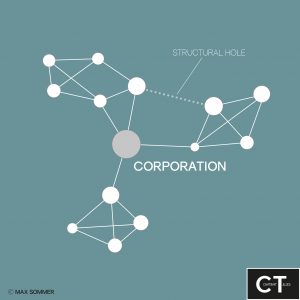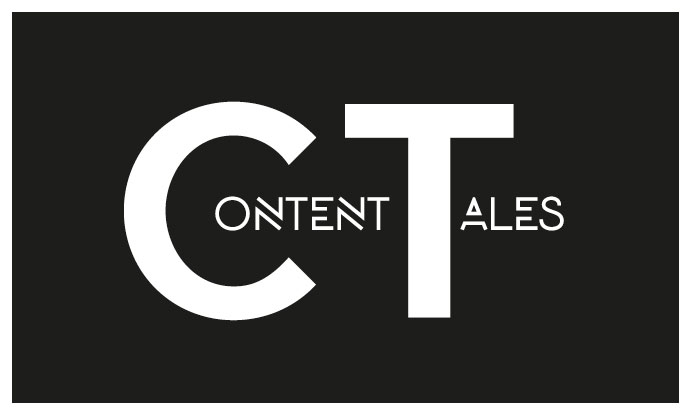READING TIME: 3 MINUTES
Web 2.0 fundamentally changed the way, how corporations communicate with their stakeholders. Understanding how different publics interact with each other and how they affect themselves, got a key success factor for public relations. Read this post and understand how a cocreational public relations approach helps with forming strong communities.
In most corporations public relations is primarily seen as a tool to achieve organizational goals. A great paper from Michael L. Kent, Erich Sommerfeldt and Adam J. Saffer however describes the “…implicit value of relationships going beyond the achievement of an organizational goal” (Kent, Sommerfeldt & Saffer, 2016). They believe that network and audience research can take a cocreational approach rather than others, which are all about continuously competing for the public’s attention. An interesting standpoint when we consider, how inflationary companies spread information in these days.
Structural holes as communicative gaps
The cocreational approach of the above mentioned authors is mainly based on criticizing two controversial public relations tactics: brokerage and tertius gaudens. For those who are not familiar with the latin term, tertius gaudens “…refers to a situation in which one party benefits from a conflict among two others” (wikipedia.org). These tactics play an important role when it comes to so-called structural holes. The network theory, describes them as communicative gaps between different groups. Their occurrence is a natural effect though: They emerge due to the forming process of sub-systems and embody differentiation borders to other network groups.

Brokerage and “tertius gaudens”
PR mostly acts by filling such structural holes. The question is, whether PR works with communication tactics like brokerage and tertius gaudens or follow a cocreational approach. Before I address to this question, let me briefly explain what brokerage and tertius gaudens are in a communicative context:
- Brokerage in general means to take advantage of the knowledge of different individuals, which belong to a social network and often “…aims to exerting power over others by controlling the flow of information and access, while bolstering one’s own reputation and status” (Kent, Sommerfeldt & Saffer, 2016).
- Tertius gaudens is build on the concept of brokerage and refers to the “third who benefits”. A broker who benefits from bringing together two unlinked parties, and therefore is filling a communicative gap, is called “tertius gauden”.
The problem with the two described concepts is that they could be used unethically. Seeking for advantages through structural holes by intentionally concealing relationships with other members of a network is a non-acceptable behavior and impinges on professional standards like the PRSA code. This code states that professionals have to advance the free flow of information in order to ensure informed decision making in a democratic society.
Cocreational public relations vs. brokerage
Modern public relations practices back away from exploitative network brokerage, because it’s assumed as unethical:
- Brokerage often leads to undermining others partners’ confidence in a broker
- Brokers often loose trust, because they are incriminated that they avoid partners to form direct links with each other
- Brokers loose trust, because they aim to make people depend on them through withholding information
- Brokers are often suspected of using information asymmetries to their advantages, but to the detriment of alters
For these and many other reasons, modern PR practitioners should dedicate themselves to being boundary spanners who are expected to bridge structural holes, rather than filling them for their own interests. Kent, Sommerfeldt and Saffer call this approach “tertius iungens”, “the third to benefit”. This concept implies a much more collaborative attitude towards public relations and is conform to contemporary developments in the fields of community building through social media. Following this cocreational approach in public relations, provides many advantages for organizations:
- Reduced uncertainty within strategically important networks
- Manageable risk due to reduced information asymmetries
- Players (corporations), who contribute to harmony within a network are more likely to be seen as a part of the network, which is as a consequence beneficial in terms of earning the community’s trust
Communities as an asset
Especially the last point is very interesting to consider from a content strategic perspective. Due to the erosion of mass media and the triumph of content marketing and corporate publishing, it’s more important than ever to systematically build communities. These communities embody an essential asset when it comes to fostering and implementing a strong content strategic communication set up. They form audiences, which leverage content to other, maybe still unconnected audiences and therefore act as multipliers. As a consequence, these audiences need to be seen as an asset, which helps monetizing content and contributing to an organic distribution of brand messages.
Tertius iungens is an alternative in the communications and public relations business. I thank Kent, Sommerfeldt and Saffer for their very interesting paper “Social Network Analysis, Power, and Public Relations: Tertius Iungens as a Path to Organizational Trust and Relationship Building”. Everything I described and stated in this post is based on their knowledge. I hope I was able to provide you with an interesting read and warmly welcome you to subscribe to my newsletter below.




Be First to Comment